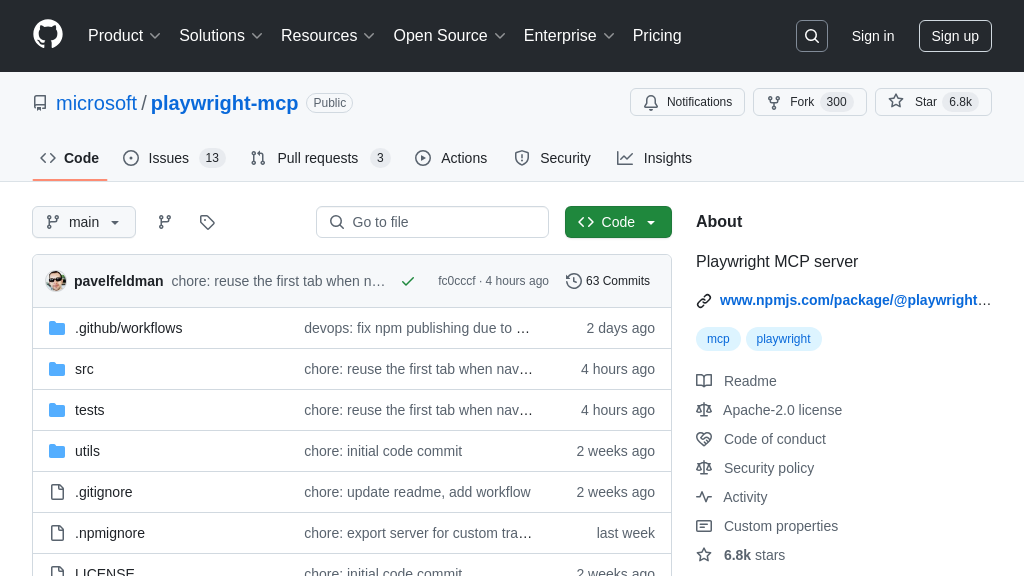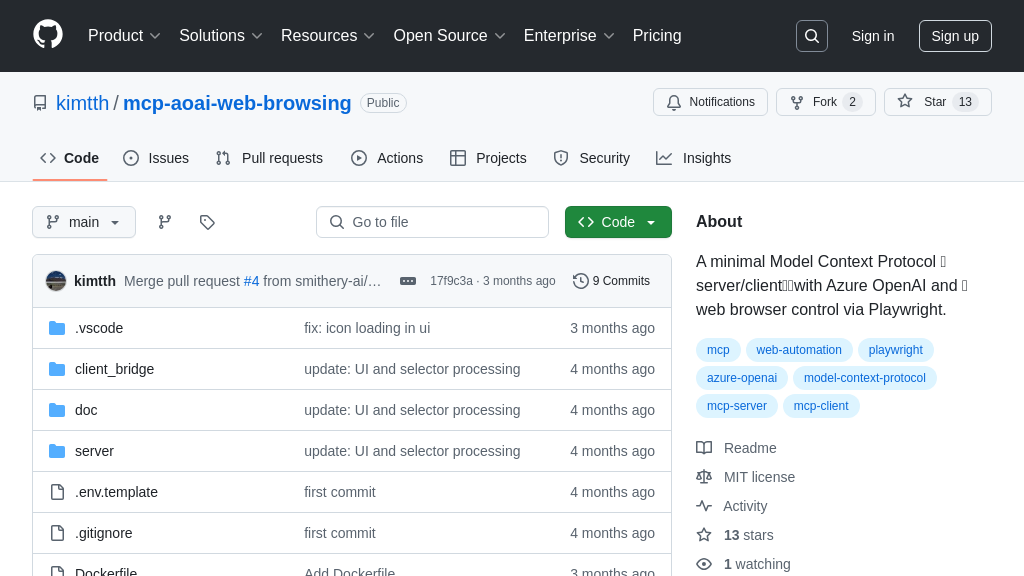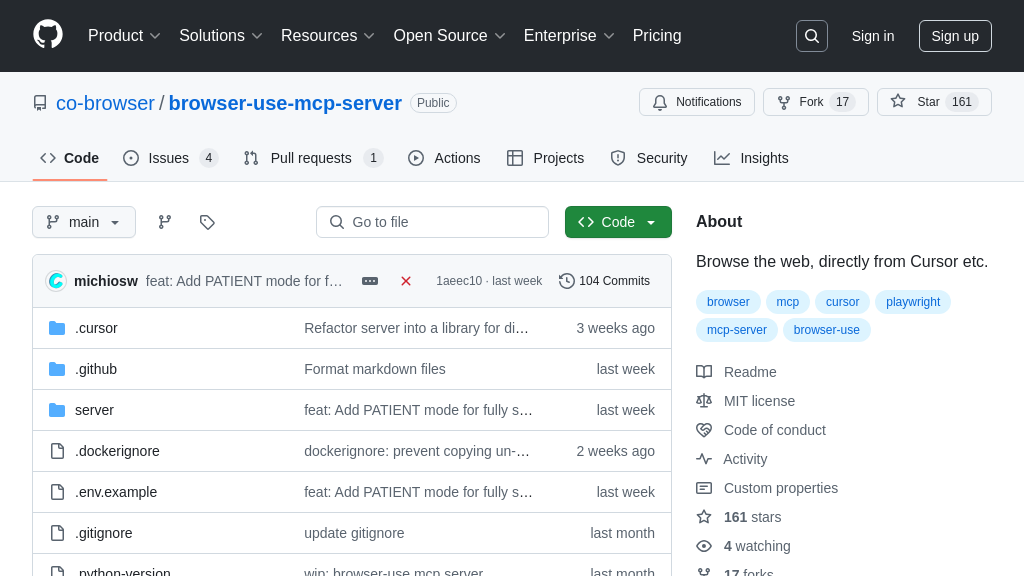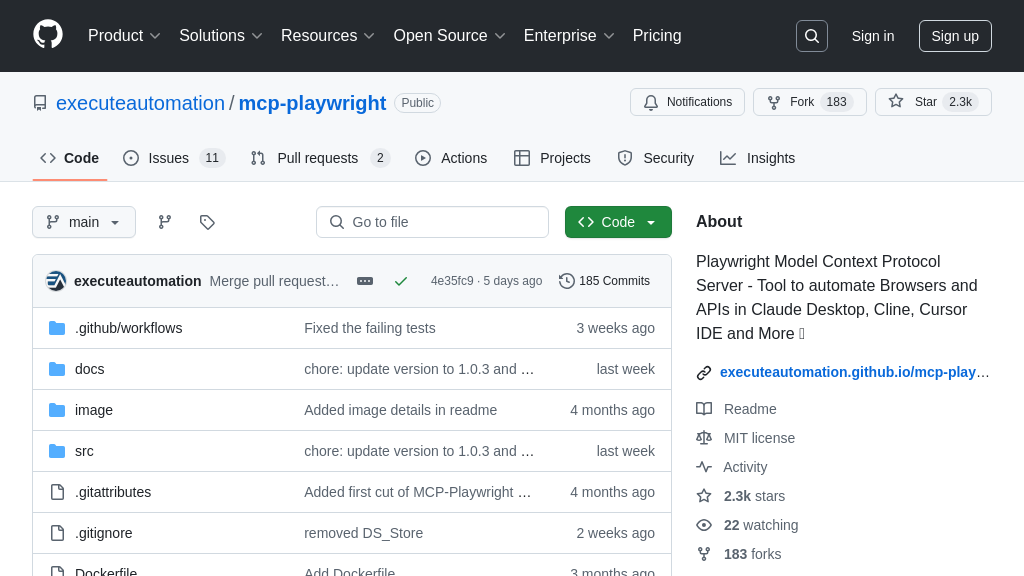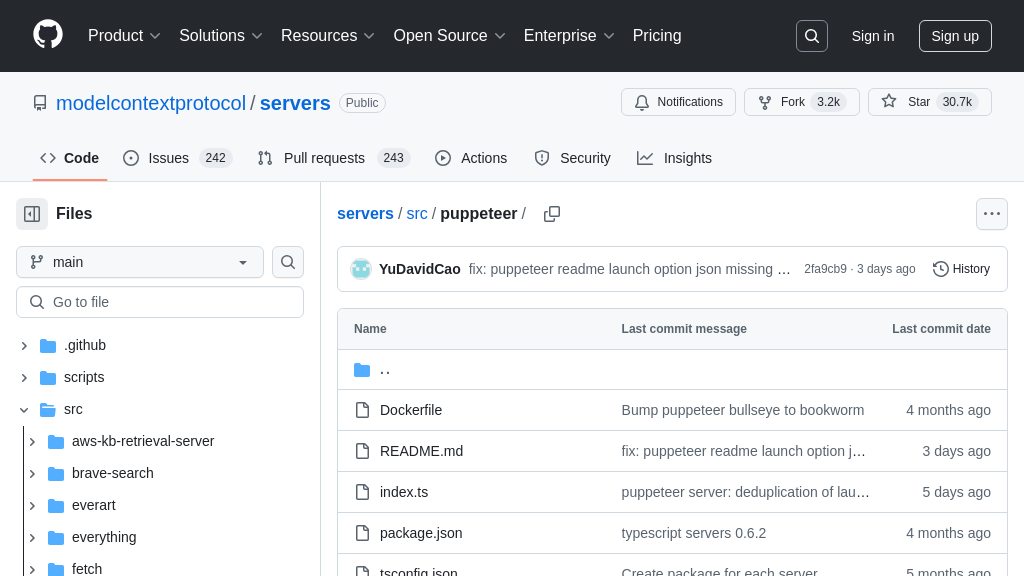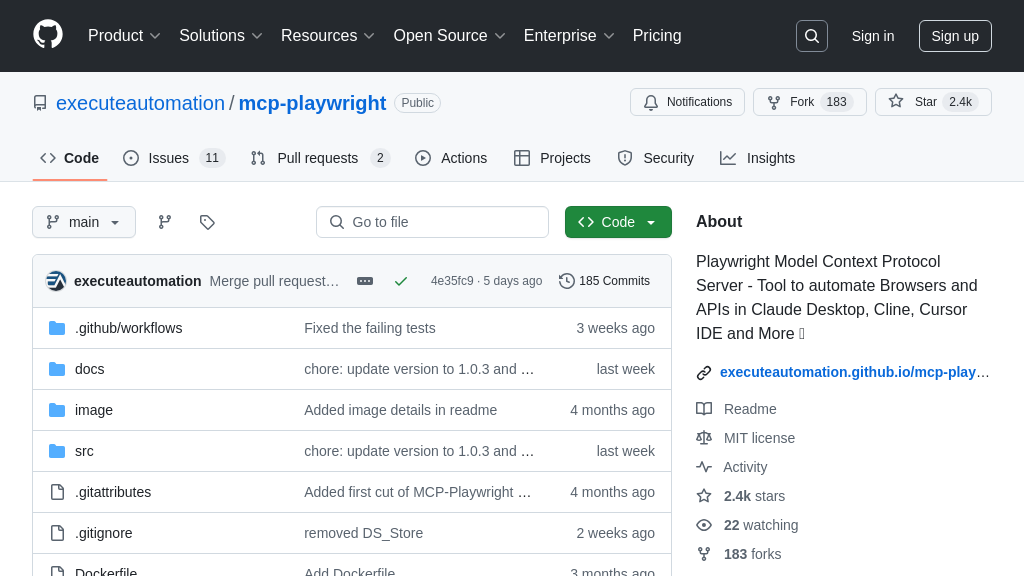mcp-server-playwright
Automate web interactions for AI models with mcp-server-playwright, an MCP server providing browser automation via Playwright.

mcp-server-playwright Solution Overview
MCP Server Playwright is a powerful tool that brings browser automation capabilities to your AI models. As an MCP server, it enables Large Language Models (LLMs) to interact with web pages, capture screenshots, and execute JavaScript within a real browser environment. This unlocks a new dimension of AI functionality, allowing models to access and manipulate information directly from the web.
Key features include comprehensive web interaction, screenshot capture of entire pages or specific elements, and console log monitoring. Developers can leverage tools like browser_navigate, browser_click, browser_fill, and browser_evaluate to create sophisticated web-based interactions for their AI models. The server provides access to console logs and screenshots as resources, enabling detailed analysis and visual confirmation of actions.
By integrating Playwright's browser automation with the MCP framework, this solution eliminates the complexities of web scraping and provides a reliable, secure, and standardized way for AI models to access and utilize web-based information. Installation is streamlined via Smithery or npx, making it easy to incorporate into existing workflows.
mcp-server-playwright Key Capabilities
Full Browser Automation
mcp-server-playwright provides complete control over a real browser instance, enabling AI models to interact with web pages in a sophisticated manner. This includes navigating to URLs, clicking buttons and links, filling out forms, and selecting options from dropdown menus. The server leverages Playwright, a reliable browser automation library, to ensure compatibility with modern web technologies and consistent behavior across different operating systems. This capability allows AI models to perform tasks that require complex web interactions, such as data extraction from dynamic websites, automated testing, and simulating user behavior.
For example, an AI model could use mcp-server-playwright to automate the process of submitting a job application on a website. The model could navigate to the application page, fill out the required fields, upload a resume, and submit the application, all without human intervention. The server uses standard CSS selectors or text-based identification to locate elements on the page, providing flexibility in targeting specific elements for interaction.
Screenshot Capture
The ability to capture screenshots of web pages or specific elements is a core feature of mcp-server-playwright. This allows AI models to visually verify the state of a web page, extract visual information, or document the results of an interaction. Screenshots can be captured of the entire page or limited to specific elements identified by CSS selectors. The captured images are then made available as resources within the MCP ecosystem, allowing the AI model to access and process them.
Consider a scenario where an AI model needs to monitor the price of a product on an e-commerce website. The model could use mcp-server-playwright to capture a screenshot of the product page, extract the price from the image using OCR (Optical Character Recognition), and then compare the current price to a historical price. The fullPage option allows capturing the entire webpage, ensuring no information is missed. The screenshots are accessible via screenshot://<n> resource URLs.
JavaScript Execution
mcp-server-playwright allows AI models to execute arbitrary JavaScript code within the context of the browser. This provides a powerful mechanism for interacting with web pages in ways that are not directly supported by the provided tools. JavaScript execution can be used to extract data, modify the DOM (Document Object Model), or trigger events. The results of the JavaScript execution are returned to the AI model, allowing it to incorporate the information into its decision-making process.
For instance, an AI model could use JavaScript execution to extract the text content of all the links on a web page, even if the links are dynamically generated. The model could then analyze the extracted links to identify relevant content or follow specific links based on predefined criteria. The browser_evaluate tool enables this functionality, allowing the AI model to inject and run JavaScript code directly within the browser environment.
Console Log Monitoring
The mcp-server-playwright provides access to the browser's console logs. This feature is invaluable for debugging and understanding the behavior of web applications, especially when the AI model is interacting with complex JavaScript-heavy sites. The console logs capture all messages, warnings, and errors generated by the browser, providing a detailed record of the browser's activity. This information can be used to diagnose issues, identify performance bottlenecks, or simply monitor the progress of a web interaction.
Imagine an AI model is attempting to fill out a form on a website, but the submission fails. By accessing the console logs, the model can identify any JavaScript errors that occurred during the form submission process. This allows the model to adjust its behavior or report the error to a human operator. The console logs are available as a resource via the console://logs URL.
Comprehensive Web Interaction
Beyond basic navigation and clicking, mcp-server-playwright offers a suite of tools for nuanced web interaction. This includes hovering over elements (browser_hover, browser_hover_text), filling out forms (browser_fill), and selecting options from dropdown menus (browser_select, browser_select_text). These tools enable AI models to perform more complex tasks that require precise control over the browser. The text-based selection options provide a more human-like interaction method, improving the reliability of the automation.
For example, an AI model could use browser_hover to reveal a hidden menu, then use browser_click_text to select a specific option from the menu. Or, the model could use browser_fill to enter data into a form, ensuring that the correct values are entered into the correct fields. These comprehensive interaction capabilities allow AI models to automate a wide range of web-based tasks with greater accuracy and efficiency.
